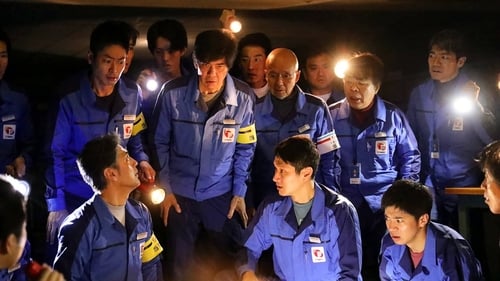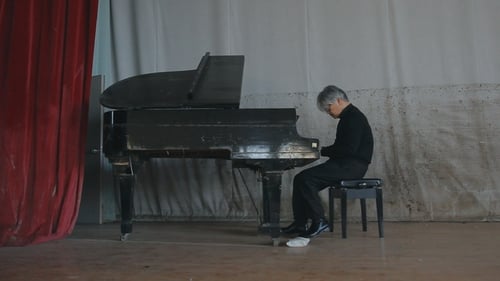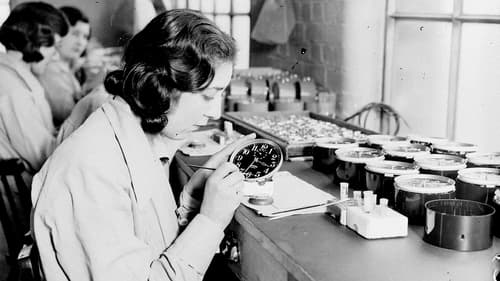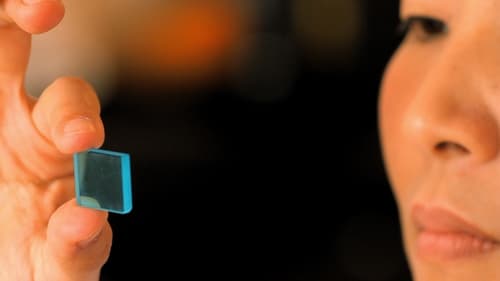
2011年3月11日午後2時46分、マグニチュード9.0の地震が発生し、それに伴う巨大な津波が福島第一原子力発電所を襲う。全ての電源が喪失して原子炉の冷却ができなくなりメルトダウン(炉心溶融)の危機が迫る中、現場の指揮を執る所長の吉田昌郎(渡辺謙)をはじめ発電所内にとどまった約50名の作業員たちは、家族や故郷を守るため未曽有の大事故に立ち向かう。

One of the most important artists of our era, Ryuichi Sakamoto has had a prolific career spanning over four decades, from techno-pop star to Oscar-winning film composer. The evolution of his music has coincided with his life journeys. Following Fukushima, Sakamoto became an iconic figure in Japan’s social movement against nuclear power. As Sakamoto returns to music following cancer, his haunting awareness of life crises leads to a resounding new masterpiece. RYUICHI SAKAMOTO: CODA is an intimate portrait of both the artist and the man.

A powerful documentary that sheds some light on what really happened at the Fukushima nuclear power plant after the 2011 earthquake and the tsunami that immediately followed. A powerful documentary - shot from March 11th, 2011 through March 2015 - that sheds some light on what really happened at the Fukushima nuclear power plant after the 2011 earthquake and the tsunami that followed.

A young German woman bonds with an elderly Japanese woman while touring the Fukushima region of Japan in the aftermath of the 2011 earthquake.

Chernobyl 1986. A nuclear reactor exploded, spewing out massive quantities of radiation into the atmosphere. Within days, the pollution had spread across Europe. Living on land contaminated with radioactivity would be a life-changing ordeal for the people of Belarus, but also for the Sami reindeer herders of central Norway. It even affected the Gaels of the distant Hebrides. Five years ago there was a meltdown at the Fukushima reactor, and thousands of Japanese people found their homes, fields and farms irradiated, just as had happened in Europe. This international documentary, filmed in Belarus, Japan, the lands of Norway's Sami reindeer herders and in the Outer Hebrides, poses the question: what lessons have we learned?

Every nuclear weapon made, every watt of electricity produced from a nuclear power plant leaves a trail of nuclear waste that will last for the next four hundred generations. We face the problem of how to warn the far distant future of the nuclear waste we have buried --but how to do it? How to imagine the far-distant threats to the sites, what kinds of monuments can be built, could stories or legends safeguard our descendants? Filmed at the only American nuclear burial ground, at a nuclear weapons complex and in Fukushima, the film grapples with the ways people are dealing with the present problem and imagining the future. Part observational essay, part graphic novel, this documentary explores the idea that over millennia, nothing stays put.

2011年3月11日、午後2時46分に起きた大地震は東日本大震災と呼ばれる状況をもたらし、福島第一原子力発電所、通称“フクイチ”では、津波に襲われた影響で核燃料のメルトダウンが始まる。菅直人総理、枝野幸男内閣官房長官ら官邸は震災への対応に追われる中、“フクイチ”の現状に関する情報が東日電力から来ないことにいら立つ。震災以降、新聞記者の鍋島は関係者たちに取材し、“フクイチ”で何が起きていたかに迫る。

原子の分裂は、核時代の到来を告げる計り知れない重要な科学的発見であるが、その一方で、人々が意図的に、あるいは偶然に放射線を浴びた多くの出来事という暗黒面もある。

After the 11 March 2011 tsunami and nuclear disaster, residents of Futaba, a town in Fukushima Prefecture, are relocated to an abandoned high school in a suburb of Tokyo, 150 miles south. With a clear and compassionate eye, filmmaker Atsushi Funahashi follows the displaced people as they struggle to adapt to their new environment. Among the vivid personalities who emerge are the town mayor, a Moses without a Promised Land; and a farmer who would rather defy the government than abandon his cows to certain starvation.

The referendum whether nuclear power plants should be banned has been held in Japan. People must decide their future.

Fukushima's Minami-soma has a ten-centuries-long tradition of holding the Soma Nomaoi ("chasing wild horses") festival to celebrate the horse's great contribution to human society. Following the meltdown of the Fukushima Daiichi Nuclear Power Plant in the wake of the March 11, 2011 earthquake and tsunami, local people were forced to flee the area. Rancher Shinichiro Tanaka returned to find his horses dead or starving, and refused to obey the government's orders to kill them. While many racehorses are slaughtered for horsemeat, his horses had been subjected to radiation and were inedible. Yoju Matsubayashi, whose "Fukushima: Memories of the Lost Landscape" is one of the most impressive documentaries made immediately after the disaster, spent the summer of 2011 helping Tanaka take care of his horses. In documenting their rehabilitation, he has produced a profound meditation on these animals who live as testaments to the tragic bargain human society made with nuclear power.

Over a year since three nuclear reactors went into full meltdown at the Fukushima Daiichi Nuclear Power Plant, a broad anti-nuclear movement is growing in Japan. Nowhere is that more apparent that in Fukushima Prefecture, where a group of local women protest the deafening silence of the Japanese government. Ignored by their own media, these women share their brutally honest views on the state of the clean up, cover-ups, untruths and the stagnant political climate in modern Japan.


The Radiant explores the aftermath of March 11, 2011, when the Tohoku earthquake triggered a tsunami that killed many thousands and caused the partial meltdown of the Fukushima Daiichi nuclear power plant on the east coast of Japan. Burdened by the difficult task of representing the invisible aftermath of nuclear fallout, The Radiant travels through time and space to invoke the historical promises of nuclear energy and the threats of radiation that converge in Japan in the months immediately following the disaster.

Documentary about the nuclear disaster that arose after a tsunami hit nuclear power plants Fukushima I and II. Employees who were present at the time of the disaster tell their story.

The Japanese population’s reaction to the catastrophe of March 2011 has been described as “stoic” by the Western media. The Japanese code of conduct is indeed deeply rooted in their Buddhist traditions, and young filmmakers Tim Graf and Jakob Montrasio observe in detail what this means for the people and their religion. At graveyards, in temples, at monasteries and with families, they question the impact this triple affliction has had on the lives and beliefs of the inhabitants. How deeply do their beliefs affect their grieving? What role do the monks play in assisting people with their grief? And, what effects has this enormous catastrophe had on their religious rituals? SOULS OF ZEN inserts the events of March 2011 into the context of traditional Zen Buddhism, examining Japan’s religiousness and the beliefs of those practising it at a crucial turning point.

Tokyo = Fukushima is a time-lapse, stop-frame animation film of the city of Tokyo, six months after the nuclear meltdown at Fukushima. The film depicts Tokyo as throbbing with life and (nuclear) electricity despite the crisis and constant radioactive threat. Recorded over a two-month period, using a Bolex Super 16mm wind-up camera on the streets of Tokyo, the film acts as a love letter to an anxious friend. The city is trying to return to normal, although paranoia and anxiety are found everywhere due to minor earthquakes, aftershocks and government untruths. This beautiful and dark film is propelled by electronic music recorded by the filmmaker in Tokyo.

True story of an American volunteer who discovered the unvarnished truth about the Fukushima nuclear disaster cover-up while living in Japan. A critical look at how the authorities handled the nuclear crisis and Tsunami relief by an American who volunteered in the clean-up.














